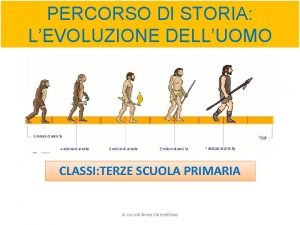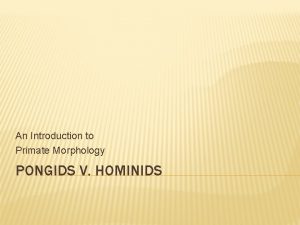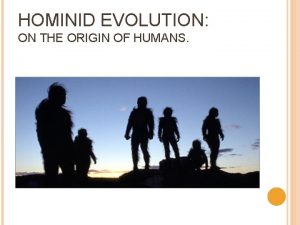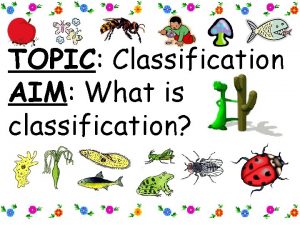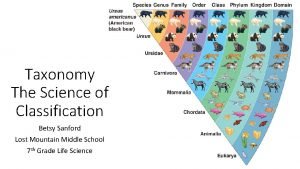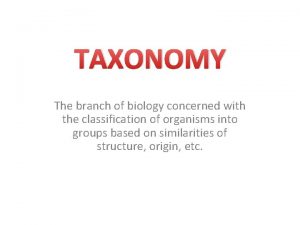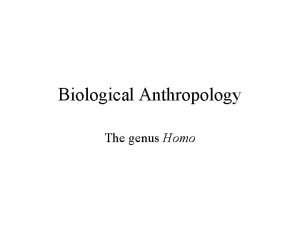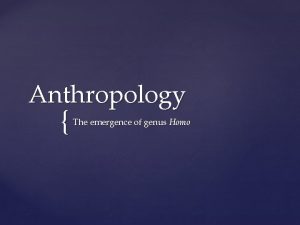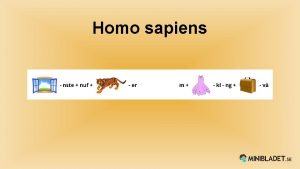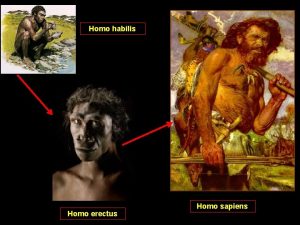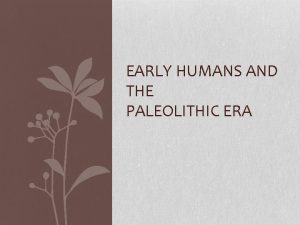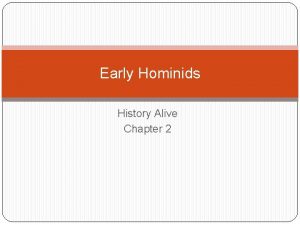The Fossil Hominids Part Two The genus Homo















- Slides: 15

The Fossil Hominids Part Two: The genus Homo

Homo habilis • Dates between 2. 1 and 1. 5 mya • First discovered and named by Mary and Louis Leakey in 1964 • “habilis” from the Latin meaning handy, skillful, able, was used to associate the species with beginning of stone tool manufacturing • Very small creature, akin to australopithecines, with long forearms and ape features • Though similar to australopithecines, there a few traits that make it stand out: – – Larger brain case (cranium) A more vertical forehead Weaker brow ridges Less prognathic qualities of the face and jaw


Homo ergaster Controversial separation from Homo erectus Mostly known as the “African erectus” Dates between 1. 8 -1. 5 mya Theory being that erectus evolved from ergaster, then migrated into Asia; claiming that erectus developed exclusively in eastern Asia, whilst ergaster stayed in Africa • Most scientists today clump ergaster fossils within erectus, pointing out if it’s African or Asian • •

The Turkana Boy (1. 5 mya) KNM-3733 (1. 8 -1. 7 mya)

Homo erectus • Dates from 1. 8 mya to 300, 000 ya • Fossil remains found in Africa, Europe, and Asia, found as far east as Java • Hallmark characteristics: – Larger brain capacity thus far, yet still possesses a broad base at the back of the skull – Slight prognathism – Slight sagittal keel (a bit of a crest) – Thick supraorbital torus (the binocular effect), with flat receding brow – First hominid species to achieve the stature and bodily proportions of modern Homo sapiens

Skull cap of Peking Man (500 -300 thousand ya A recreation of the Peking Man skull

Erectine Tool Usage • Both ergaster and erectus have been credited with beginning a new tradition of “bifaced” tools known as Acheulean. • Stones are worked on both sides to produce a wellformed cutting blade, known as the hand ax that formed the center of what is known as the “Acheulean tool kit” • Possibly, erectus was the first hominid to use fire • These attributes give scientists the belief that the erectus was able to migrate from Africa with these skills in hand—yet contradictory evidence exists (always)

Oldowan choppers The Acheulean hand ax and kit)

Erectine Brains • Larger brains allude to more advanced tool usage, more complex social organization and communication • Larger brains may come from biped action, allowing hominids to stay out in the sun, run, and disperse heat from the body more easily

The Emergence of Homo sapiens • Come about anywhere from 500, 000 to 200, 000 years ago • Brain case is around modern range, with rounded back of the skull • Archaic sapiens share some features with erectus: – Thick brow ridges (that binocular effect is more of a double arch on sapiens) – Flat, receding brow – Wide base – Chinless jaws – Thick craniums and large teeth


Archaic Homo sapiens and Neanderthals • Neanderthals appear around 200, 000 ya and die out around 30, 000 ya in Europe and Eurasia • Extremely robust features (brow ridge, cranial capacity, lower limbs); prognathic face and chinless jaws with massive teeth • Squatty appearance conserves body heat in harsh climate of the last glaciation (Ice Age) • Neanderthals did not possess a fully modern vocal tract, and probably did not completely converse as Homo sapiens (evidence is inconclusive)

Neanderthal Culture • Large game hunters, producing flaked blades for hunting—their tool tradition similar to modern sapiens • Little evidence of art and religion: – Some Neanderthals buried their dead in shallow graves, but little symbolic artifacts are found in Neanderthal sites, compared with sapiens sites – Some new findings say yes, but again the evidence is lacking

 Homo sapiens verifica scuola primaria
Homo sapiens verifica scuola primaria Pongids and hominids
Pongids and hominids Hominids
Hominids Behavioral isolation
Behavioral isolation Part whole model subtraction
Part whole model subtraction Unit ratio definition
Unit ratio definition Brainpop ratios
Brainpop ratios What is a technical description
What is a technical description Part of bar
Part of bar The phase of the moon you see depends on ______.
The phase of the moon you see depends on ______. Part to part variation
Part to part variation Canis lupus genus
Canis lupus genus Tea genus
Tea genus Genus order family
Genus order family Classification study guide answer key
Classification study guide answer key Phylum
Phylum
